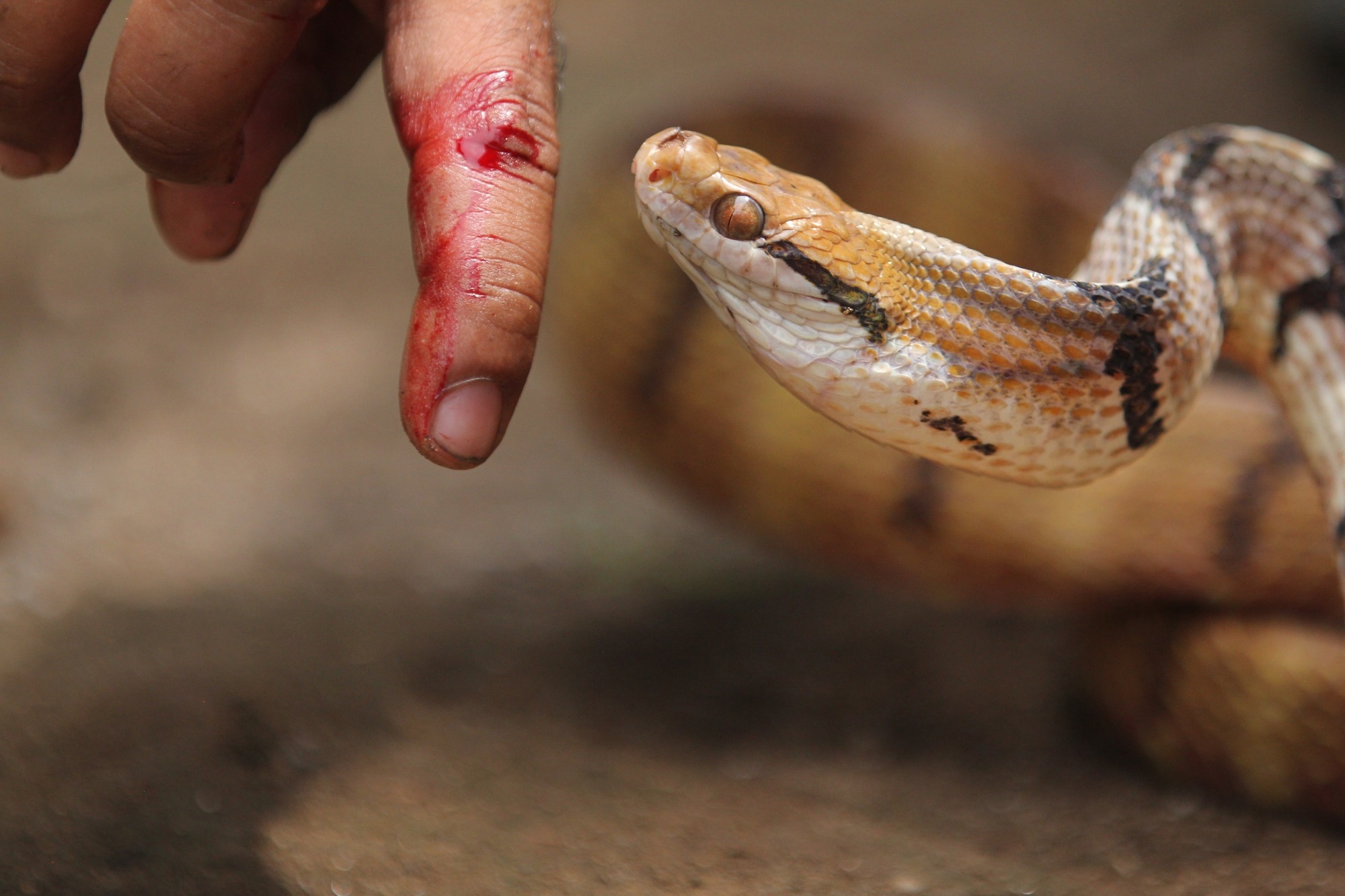Snakebites affect close to two million individuals a year, causing substantial mortality and disability, especially in sub-Saharan Africa, and south and southeast regions of Asia.
Current treatment options include antivenoms, which are species-specific, expensive, and cause various adverse reactions.
In a recent study published in Science Translational Medicine, scientists used functional genomics to dissect and understand the cytotoxicity of spitting cobra venom and define the genetic interactions between the venom and the target to develop a locally acting antidote.
 Study: Molecular dissection of cobra venom highlights heparinoids as an antidote for spitting cobra envenoming. Image Credit: Mufti Adi Utomo/Shutterstock.com
Study: Molecular dissection of cobra venom highlights heparinoids as an antidote for spitting cobra envenoming. Image Credit: Mufti Adi Utomo/Shutterstock.com
Background
A significant portion of fatalities and long-term morbidity due to snakebites occur among children and young adults in Southeast and South Asia and sub-Saharan Africa.
The health and financial burden of snakebites is disproportionate, impacting rural and often impoverished communities. Snakebite envenoming is the most fatal neglected tropical disease.
The economic burden and disability due to snakebites have prompted the World Health Organization to reclassify snakebites as a priority category A neglected tropical disease.
The antibodies currently available are produced through immunization of sheep and horses and are often species-specific. The need for cold storage and intravenous administration in a hospital also impacts its effective use in rural settings lacking hospitals and storage facilities.
Furthermore, antivenoms often elicit a range of adverse reactions, and the large fragment size of the antibodies renders them ineffective in preventing the localized effects of envenoming, such as swelling, blistering, and necrosis, leading to loss of function and potential amputation of the limb.
About the Study
In the present study, the scientists focused on the mechanisms of local tissue damage. They explored whether existing drugs could be repurposed to treat tissue damage and be administered easily in rural settings that lack hospitals and trained personnel.
Most of the research thus far has been concentrated on the hemotoxic and neurotoxic effects of venoms despite local tissue damage being the major cause of disability and long-term morbidity.
The two families of venomous snakes considered medically important are viperids and elapids, with envenomation causing significant morbidity. Envenomation and resulting pathology in Africa are predominantly due to the spitting cobra, an elapid of the genus Naja.
Therefore, the researchers focused on understanding the genetic interactions between the venom and tissue target resulting from the cytotoxic effects of spitting cobra venom to develop a locally acting antivenom.
They began using a human haploid cell line (HAP1) to test the cytotoxicity of black-necked and red-spitting cobras (Naja nigricollis and Naja pallida, respectively).
Subsequently, they conducted Clustered Regularly Interspaced Short Palindromic Repeats (CRISPR) knockout screening using transduced HAP1 cells to explore the molecular mechanisms of elapid venom cytotoxicity.
The CRISPR-knockout cells were screened using the venom from the two spitting cobra species for nine days. After that, the surviving cells were utilized for single-guide ribonucleic acid (sgRNA) isolation, amplification, and quantification.
The sgRNAs linked to venom sensitization were identified by comparing the sgRNAs from selected cells to those from unselected cells.
A set of modifying genes that were found to be associated with venom cytotoxicity resistance were identified, and each of those genes was validated independently. Affinity chromatography then examined interactions between venom components and potential treatment targets.
Major Findings
The study found that many genes that provided resistance to the cytotoxicity of the spitting cobra venom were involved in proteoglycan biosynthesis and that heparinoids could potentially inhibit the cytotoxicity of elapid venom.
The independent validation of the genes involved in venom sensitization revealed that knockout experiments targeting each component of the heparin or heparan biosynthesis pathway resulted in some resistance to the N. nigricollis and N. pallida venoms.
When the researchers treated the cells with knocked-out heparin/heparan synthesis genes with the venom from the Tanzanian spitting cobra, they observed continued resistance to venom cytotoxicity, suggesting a degree of generalizability for the findings.
This also indicated that there was a general involvement of components of the heparin/heparan biosynthesis pathway in the cytotoxic effects of cobra venom, and targeting the heparin or heparan biosynthesis genes could be a potentially viable avenue for treating local cytotoxicity from elapid envenomation.
Further experiments using heparinoids showed they interacted with the phospholipases and three-finger cytotoxins that comprise snake venom to varying degrees. Still, the strongest interaction was with the three-finger cytotoxins CTx3 and CTx4.
Additional experiments were conducted on mice intradermally challenged with the Tanzanian spitting cobra venom and treated with tinzaparin, a Food and Drug Administration (FDA)-approved heparinoid.
The results showed that compared to untreated envenomated mice, the ones treated with the heparinoids showed significantly lower levels of necrosis and epidermal ulceration.
Conclusions
The findings highlighted the potential to treat the cytotoxicity of elapid envenomation using heparinoids locally.
The systematic examination of the molecular interactions between cobra venom and the targets highlighted the possibility of using existing FDA-approved drugs to treat the cytotoxic effects of snake venom such as necrosis and ulceration in the field, and significantly lower the long-term morbidity associated with snakebites.
Journal reference:
-
Du, T. Y., Hall, S. R., Chung, F., Kurdyukov, S., Crittenden, E., Patel, K., Dawson, C. A., Westhorpe, A. P., Bartlett, K. E., Rasmussen, S. A., Moreno, C. L., Denes, C. E., Albulescu, L., Marriott, A. E., Mackay, J. P., Wilkinson, M. C., Gutiérrez, José María, Casewell, N. R., & Gregory, N. G. (n.d.). Molecular dissection of cobra venom highlights heparinoids as an antidote for spitting cobra envenoming. Science Translational Medicine, 16(756). doi:10.1126/scitranslmed.adk4802. https://www.science.org/doi/10.1126/scitranslmed.adk4802